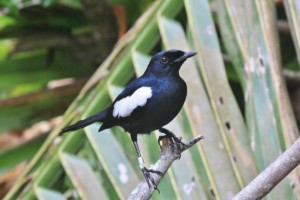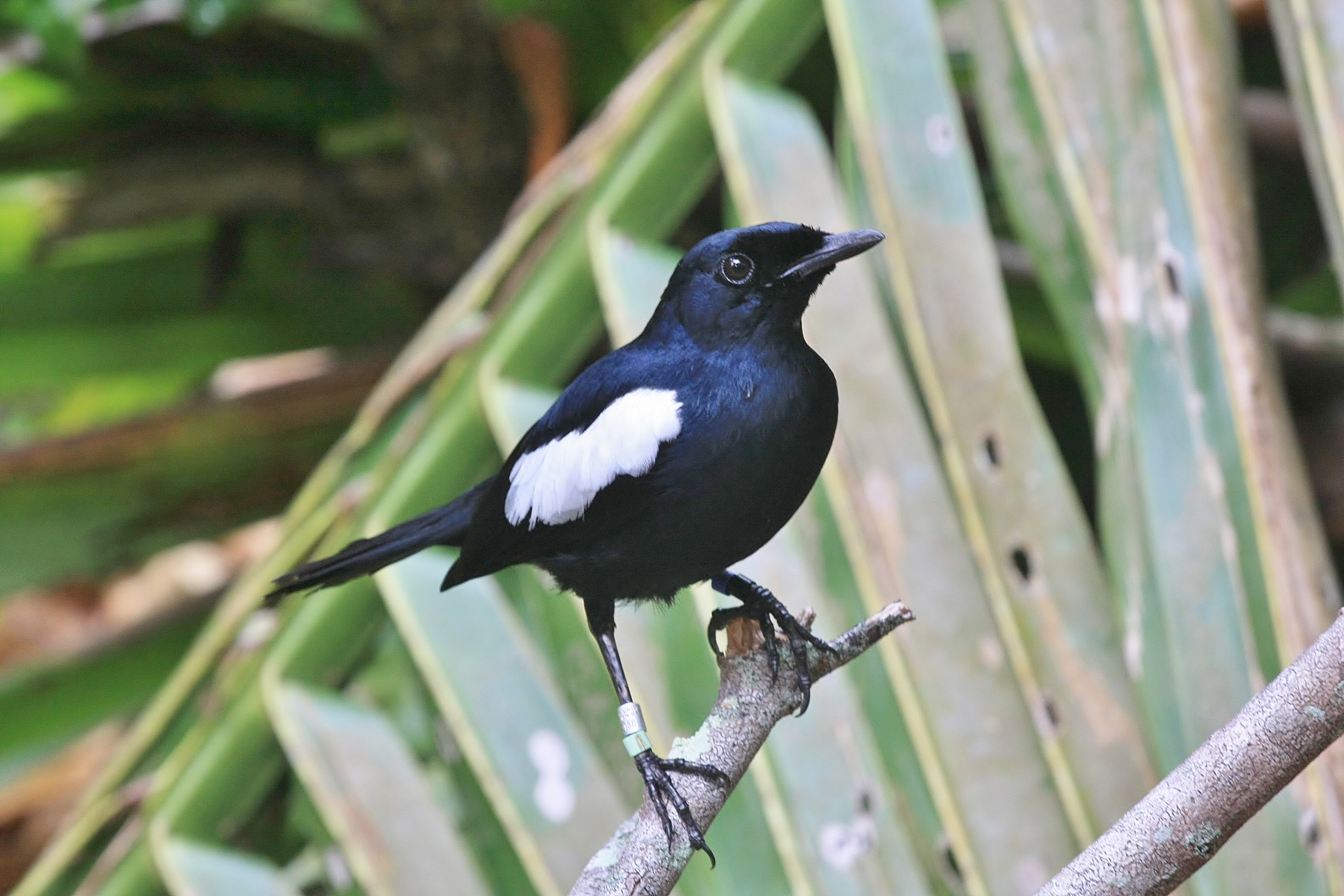
LINKED PAPER
Conservation genomics of the endangered Seychelles Magpie‐Robin (Copsychus sechellarum): a unique insight into the history of a precious endemic bird. Cavill, E. L., Gopalakrishnan, S., Puetz, L. C., Ribeiro, Â. M., Mak, S. S., da Fonseca, R. R., Pacheco, G., Dunlop, B., Accouche, W., Shah, N., Zora, A., Calabrese, L., Genner, M., Jones, G., Guo, C., Zhang, G. & Gilbert, M. T. P, A. L. 2022. IBIS. DOI: 10.1111/ibi.13023. VIEW
Eight individuals. That is the number of Seychelles Magpie-Robins (Copsychus sechellarum) that were left on the island Frégate in 1965. They represented the entire population of this bird species. Its dramatic decline was largely due to agricultural intensification and the introduction of exotic predators, such as cats and rats (Burt et al. 2016). This precarious situation prompted conservation biologists to start translocating birds to other islands (Wright et al. 2014). Although some of these translocations failed, the intervention was eventually successful and has elevated the population size to almost 400 individuals, spread across five islands (Aride, Cousin, Cousine, Denis and Frégate). In terms of numbers, the future of the Seychelles Magpie-Robin looks bright. But a recent genetic study raises some new concerns.
Heterozygosity
Emily Cavill and her colleagues compared the genomes of 141 individual birds. Their analyses uncovered extremely low genetic diversity across the five islands. One genetic measure in particular – average global heterozygosity – painted a grim picture. This statistic captures the level of genetic diversity across the entire genome. In the Seychelles Magpie-Robin, its value was the lowest ever reported for a bird species (Li et al. 2014). Other genetic parameters corroborated this pattern of limited genetic diversity, which the researchers attributed to a combination of past genetic bottlenecks and extensive inbreeding.

Figure 1. Compared to other bird species, the level of genetic diversity – measured as global heterozygosity – is extremely low in the Seychelles Magpie-Robins.
Selecting individuals
These findings highlight the importance of genetic techniques in translocation programs. Ideally, conservation biologists want to move unrelated individuals to avoid further inbreeding (Armstrong & Seddon 2008). In the Seychelles Magpie-Robin, however, some individuals were selected for translocation based on behavioural data. This approach can certainly help researchers discriminate between related and unrelated birds, but it is not as reliable as genetic techniques. It is possible that closely related individuals were unknowingly translocated together. Continued genetic monitoring is thus needed to closely follow the level of inbreeding on the islands and to inform future translocation plans. The number of Seychelles Magpie-Robins is increasing. Let’s make sure the level of genetic diversity does too.
References
Armstrong, D. & Seddon, P. (2008). Directions in reintroduction biology. Trends in Ecology & Evolution 23: 20– 25. VIEW
Burt, A., Gane, J., Olivier, I., Calabrese, L., De Groene, A., Liebrick, T., Marx, D. & Shah, N. (2016). The history, status and trends of the endangered Seychelles Magpie-robin Copsychus sechellarum. Bird Conservation International 26: 505– 523. VIEW
Li, S., Li, B.O., Cheng, C., Xiong, Z., Liu, Q., Lai, J., Carey, H.V., Zhang, Q., Zheng, H., Wei, S., Zhang, H., Chang, L., Liu, S., Zhang, S., Yu, B., Zeng, X., Hou, Y., Nie, W., Guo, Y., Chen, T., Han, J., Wang, J., Wang, J., Chen, C., Liu, J., Stambrook, P.J., Xu, M., Zhang, G., Gilbert, M.T.P., Yang, H., Jarvis, E.D., Yu, J. & Yan, J. (2014). Genomic signatures of near-extinction and rebirth of the crested ibis and other endangered bird species. Genome Biology 15: 557. VIEW
Wright, D.J., Spurgin, L.G., Collar, N.J., Komdeur, J., Burke, T. & Richardson, D.S. (2014). The impact of translocation on neutral and functional genetic diversity within and amongst populations of the Seychelles warbler. Molecular Ecology 23: 2165– 2177. VIEW
Image credits
Top right: Seychelles Magpie-Robins (Copsychus sechellarum) | Adrian Scottow | CC BY-SA 2.0 Wikimedia Commons
Blog posts express the views of the individual author(s) and not those of the BOU.
If you want to write about your research in #theBOUblog, then please see here




